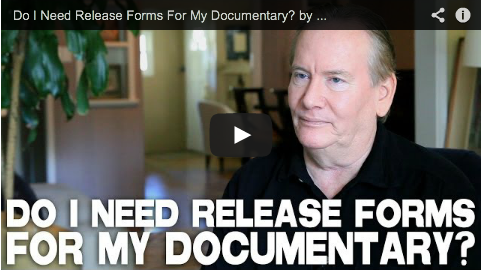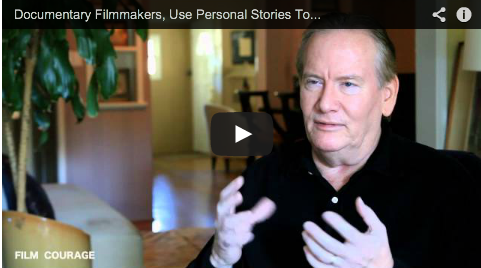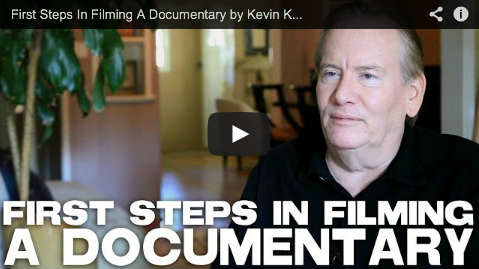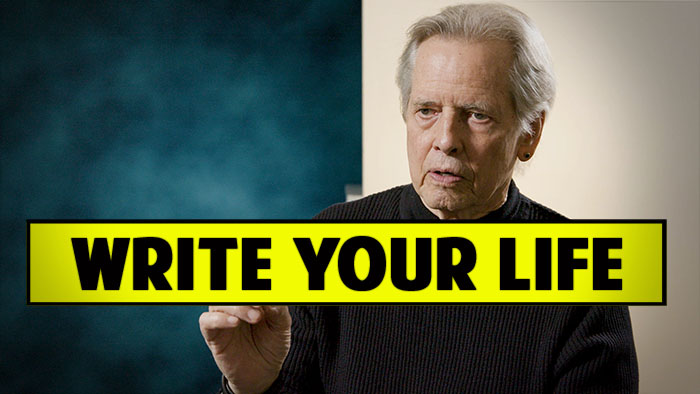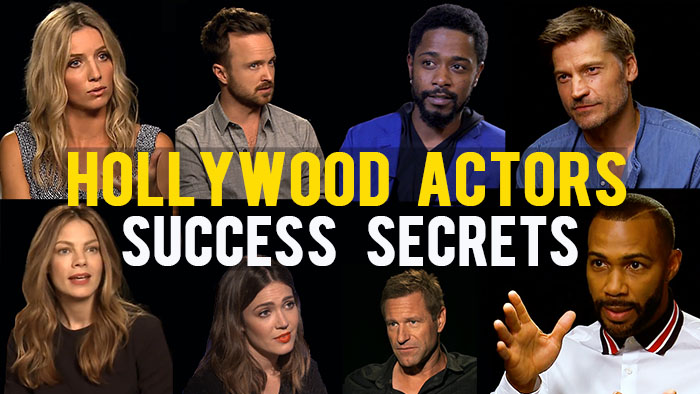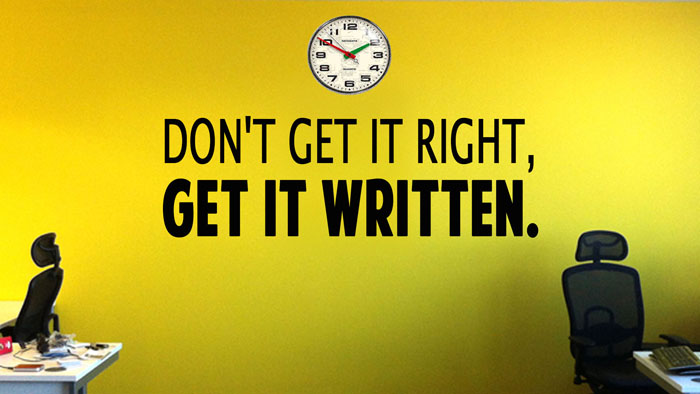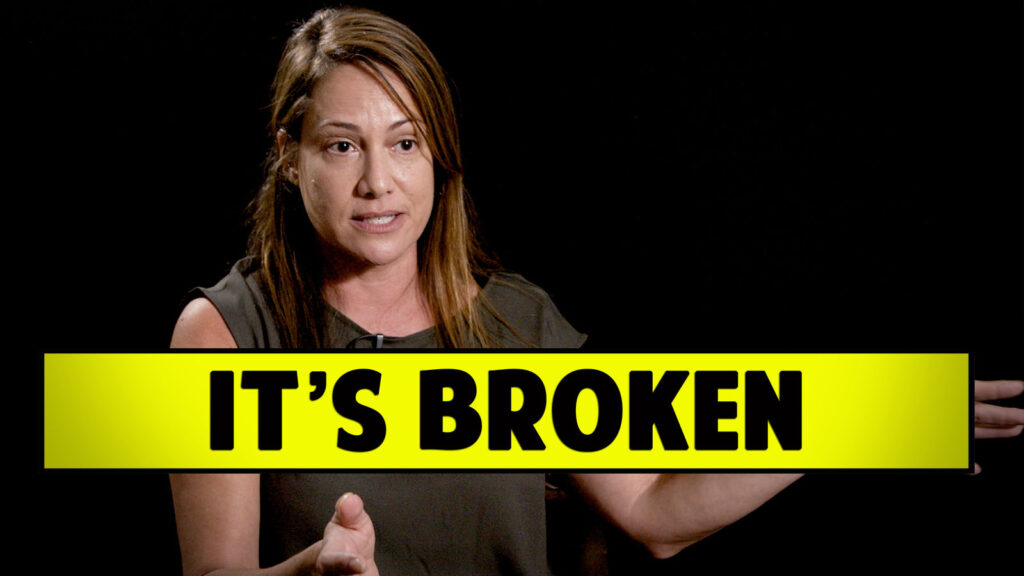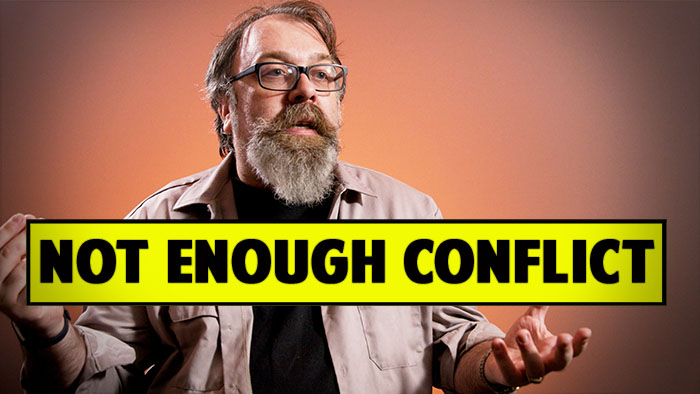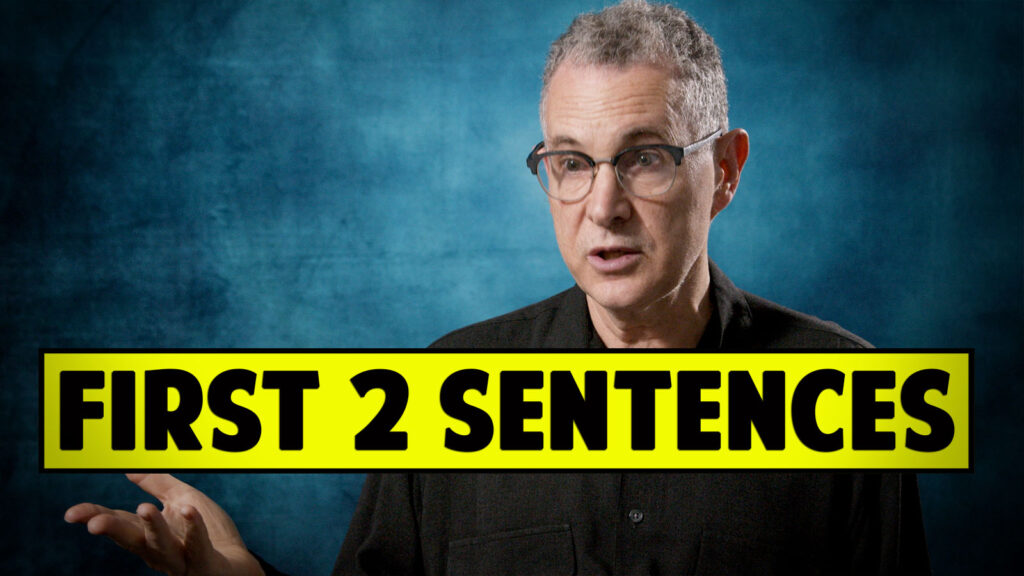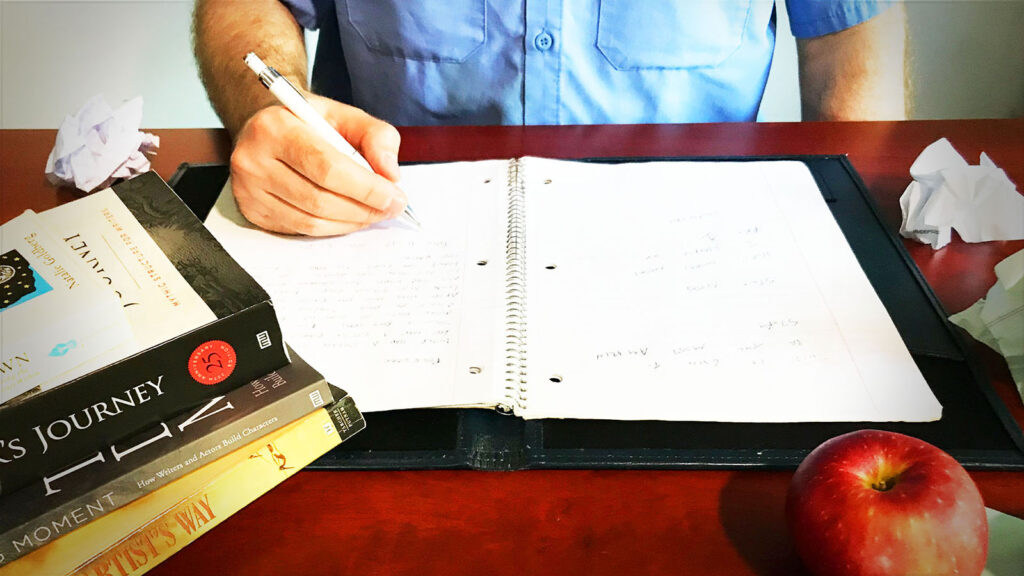
KEVIN KNOBLOCK – FILMMAKER/DGA DIRECTOR/WRITER/PRODUCER
When you make documentary films, every penny counts. Funding your documentary is always the most difficult part of making a non-fiction film. In my full-day and two-day Documentary Film Class workshops, I teach my students how to plan, fund, pre-produce, produce, post produce, market and distribute a feature length documentary film. I also teach them how to save money on their equipment purchases.
Here are my Top Ten Ways To Save Money on Your Camera Equipment (and related gear).
1. Know when to buy your gear, and when to rent it. (Part One)
I just got back from shooting in Rome and in St. Peter’s Square in Vatican City for the canonization of Pope John Paul II and Pope John XXIII. It was a three-day shoot, and we shot on a Canon C300 with an Angénieux 25/250 HR zoom lens. Now for a three day shoot that’s not a set-up that you’d want to purchase. The Canon C300 body costs around $14,000, and the Angénieux 25/250 HR comes in at over $18,000. I can rent both for around $1,000 a day, not including the camera bells and whistles (and not including the cameraman).
2. Know when to buy your gear, and when to rent. (Part Two)
I also shot in St. Peter’s Square on a Canon 5D Mark II which we own. Purchasing a high-end DSLR like the Canon 5D makes great sense when you want great images from your B camera and plan to use it a lot. And of course this large sensor camera can even be used as your primary camera on your documentary film. The images are that good.
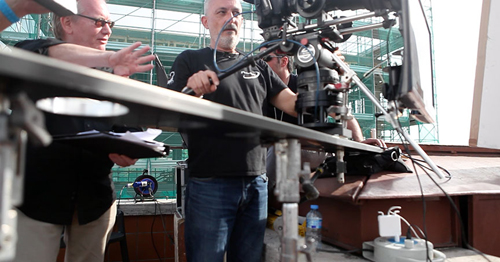
Kevin Knoblock in Rome at St. Peters Square using the Canon C300 with an Angénieux 25/250 HR lens
Sometimes you are working on budgets so tight that purchasing a new DSLR is out of the question. A new Canon 5D Mark III body will run you around $3200. But you can purchase a refurbished Canon 5D Mark II with a one-year warranty for around $1400.
4. Know which lenses are best for specific needs.
Whether you’re renting or buying, you don’t always need the most expensive lens your budget will allow. Are you shooting a sit-down interview in a controlled light environment? Then you don’t need the fastest lens necessarily. Faster lenses sell and rent for more. Do you need to rent a full set of prime lenses, or will a zoom lens make things quicker and cheaper? Always consider which lens is right for your shoot.
5. Know your lighting needs.
Do you really need to rent a grip truck and hire a lighting director and gaffer? Many times you do for larger and more complicated lighting set-ups or to make your sit-down interviews really pop. But a good lighting director charges around $700 to $1000 dollars a day for his of her services for a non-fiction film. Depending on the market, you’ll get the LD plus his minimal kit of 3 or 4 lights. If you want more lights, be prepared to pay. Add another $500 per day or so for a gaffer.
.

Kevin Knoblock’s crew shooting in St. Peter’s Square using the Canon C300 with an Angenieux 25/250 HR lens
On most documentary shoots, your Director of Photography is also your lighting cameraman. He or she will include at minimum three or four lights in their camera rental package. In most cases this is enough to light a beautiful sit-down interview, so you won’t need to hire a lighting director and gaffer and their extra lights.
6. Knowing the look you are after will save on your crew costs.
Typically a two-man ENG style documentary crew runs you around $3,200 a day, depending on your market. For that you get a cameraman, soundman, and their gear. This $3,200 will include a HD camera like a Sony F5, or a Canon C300, or a news-style 3 chip CCD camera like the Sony HDW650F.
But if your needs don’t require this level of camera, then consider shooting your show on a DSLR. Two-man crews using DSLR’s will come in considerably cheaper – usually between $2,000 and $2,500 a day, again depending on the market.
7. Mix and match.
Here’s another way to save on crew costs. Let’s say you have purchased your DSLR camera, like a Nikon D800 or Canon 5D Mark III or Panasonic Lumix GH4, because you are going to be shooting so many days you could not afford a $3,200 a day two-man crew rental. Now you can save by hiring out your cameraman without his camera kit rental, because you’ll provide your own camera.
8. Go on auto-pilot for your B camera.
Many times when I am directing a documentary, I like to use a second camera when I’m shooting sit-down interviews to get an additional look. Usually I set it up for more of a profile shot. But I don’t need to have a second cameraman working this B camera. I simply have my Director of Photography set it up on a tripod and lock it down. And I’ll frequently use my personal DSLR with a really great lens to match my A camera. So this is, essentially, a free second camera line item in my budget.
9. Tripods and lights.
Again, it all comes down the type and style of the documentary you are making. If your documentary is primarily sit-down interviews and lots of archival material, do you really need that $2,000 tripod with the Video Head and carbon fiber legs? In the scenario I just described you probably don’t, because your subjects are sitting down and you’re purchasing archival material for the coverage. For this type of shoot you can buy a solid tripod with a fluid head for around $350 to $500.
The same goes for lights. Consider what you are shooting and what your lighting needs are. Lighting kits like the Arri Softbank IV Plus 5 Light Kit costs around $3200. But if you know how to light, you can shoot beautiful interviews with Impact Three-Light Mini-Boom Kit for around $250.
10. Gray market purchases.
If your production is REALLY short of production funds, you can always go gray. Ever notice how some camera stores advertise new gear for WAY less that the others? That’s because it’s usually what is called “gray market’, meaning this product was designed for sale overseas and has been imported by someone other than an authorized distributor or agent.
Gray market cameras often have no factory warranty and receive no support from the manufacturer so you won’t be able to get firmware or software updates.
But they are new products and usually much, much cheaper than the same items sold through the manufacturer and their representatives. But, buyer beware!
There are, of course, many other ways I teach my students on how to stretch their production dollars when making a documentary film. For more information please visit DocumentaryFilmClass.com.
Documentary filmmaking is a great place to learn the craft of filmmaking without spending the huge amounts of time and money needed to make narrative films. Feature filmmaker Paul Greengrass made docs long before he directed The Bourne Supremacy. And many other feature filmmakers, from Stanley Kubrick to William Friedkin, started in documentaries. It’s a great place to learn the basics of story telling and filmmaking.
Film Courage viewers receive a $20 discount off Kevin Knoblock’s next All Day Documentary Film Class at The Writers Store in Burbank on May 17, 2014 where cameras will be covered at length, more info here. The discount code is DFC2014.
CONNECT WITH KEVIN KNOBLOCK
Kevin Knoblock has been a documentary filmmaker for more than 20 years. Among his documentaries are Border War: The Battle Over Illegal Immigration and Broken Promises: The United Nations at 60.
Documentary Filmmakers, Use Personal Stories To Illuminate Large Issues by Kevin Knoblock
Kevin Knoblock has written, produced and directed hundreds of hours of syndicated television, written and produced multiple hours of one-hour cable documentaries, and written, produced and directed feature length film documentaries, including BORDER WAR (Winner, Best Documentary 2006, American Film Renaissance) and BROKEN PROMISES: THE UNITED NATIONS AT 60 (2005 WorldFest-Houston International Film Festival Special Jury Remi Prize winner).
In 2009 and 2010, Knoblock wrote, produced and directed the feature documentary NINE DAYS THAT CHANGED THE WORLD about Pope John Paul II’s historic trip to Poland, the beginning of the Solidarity movement and the collapse of Soviet Communism. NINE DAYS premiered in April, 2010 in the US and in June, 2010 in Warsaw, Krakow and Rome. NINE DAYS went on to win two 2011 Telly Awards and a Special Jury Gold Remi Award for Best Documentary at the 2011 WorldFest-Houston International Film Festival.
Other titles as writer/producer/director include the feature-length documentaries AMERICA AT RISK, A CITY UPON A HILL, and RONALD REAGAN: RENDEZVOUS WITH DESTINY, winner of the 2011 Hudson Institute Film Festival. RENDEZVOUS WITH DESTINY premiered at The Kennedy Center in February of 2009.
Knoblock also served as Executive Producer of the feature-length documentary PERFECT VALOR (Best Documentary at the 2009 G.I. Film Festival, Best Documentary at the 2010 Beaufort International Film Festival, and Winner of the 2010 Norman Hatch Award, The Marines highest combat journalism award).
Television work includes multiple cable documentaries for A&E, History, TLC, and Discovery and writing and directing at the broadcast stations KCBS and KABC, where he received multiple Emmy nominations.
At Paramount Television, he worked for 9 years as a staff director on “Entertainment Tonight”. Knoblock contributed to over 2800 ET programs and wrote and directed over 1200 segments.
Knoblock attended San Diego State University, where he received a BS in Film and Television. He is a member of the Directors Guild of America.
Film Courage viewers receive a $20 discount off Kevin Knoblock’s next All Day Documentary Film Class at The Writers Store in Burbank on May 17, 2014 where cameras will be covered at length, more info here. The discount code is DFC2014.






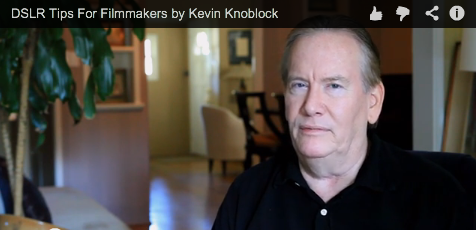
.png)
